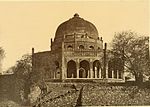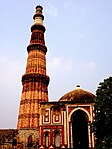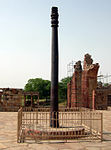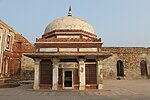Hijron Ka Khanqah

Hijron Ka Khanqah is an Islamic monument located in Mehrauli, South Delhi, India. The literal meaning of Hijron ka Khanqah is a "Sufi spiritual retreat for eunuchs", with the word hijron (plural of hijra) more widely referring to a specific community of transgender women throughout the Indian subcontinent. It is one of the many monuments located in the Mehrauli village within the Archeological Park. It is maintained well by the Hijras of Turkman Gate, in Shahjahanabad (present day Old Delhi) who are in possession of this 15th-century monument since the 20th century.Hijron Ka Khanqah is a pre-Mughal, Lodi period, monument dated to the 15th century known for the serene atmosphere that exists at the monument where some eunuchs of Delhi were buried during the Lodi dynasty's reign. It is also said that Hijras of Turkman Gate who own this monument now visit the place on religious days to distribute food to the poor.Khanqah is Persian word. It connotes a religious edifice where Muslims of Sufi religious order assemble to achieve spiritual peace and character building.
Excerpt from the Wikipedia article Hijron Ka Khanqah (License: CC BY-SA 3.0, Authors, Images).Hijron Ka Khanqah
Geographical coordinates (GPS) Address Nearby Places Show on map
Geographical coordinates (GPS)
| Latitude | Longitude |
|---|---|
| N 28.521944444444 ° | E 77.178611111111 ° |
Address
110030
Delhi, India
Open on Google Maps









